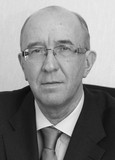Stages of adaptation as an important factor in the ability of the athletes' body to adapt to the action of loads of increasing power
Keywords:
adaptation, cardiorespiratory system, athletes, increasing power loads.Abstract
Objective of the study was to identify the stages of adaptation of the cardiorespiratory system of athletes of different sports, age and gender to the action of an increasing testing load.
Methods and structure of the study. Athletes of different sports, age and gender took part in the scientific work. Based on age, the athletes were divided into groups. Athletes of all groups worked on a bicycle ergometer with a power of 50 to 200 W with a pedaling frequency of 60-70 rpm, the duration of each load step was 3 minutes, the method of tetrapolar chest rheography according to Kubizek was also used, modified by Yu.S. Vanyushin.
Results and conclusions. Three stages of adaptation of the cardiorespiratory system of athletes, specializing in different sports, age and gender, with increasing power load on a bicycle ergometer, were revealed. It turned out that the existing first or lower stage of adaptation is associated with the function of respiration. The next stage of adaptation is manifested as a result of the activity of the circulatory system and is aimed at increasing the indicators of the chronotropic reaction and inotropic function of the heart. It can be classified as an intermediate level of adaptation of the body of athletes. And the highest stage of adaptation is aimed at increasing the characteristics of the body of athletes associated with gas exchange, and is manifested in the growth of the oxygen utilization factor.
References
Vanyushin M.Yu., Vanyushin Yu.S. Adaptatsiya kardiorespiratornoy sistemy sportsmenov raznykh vidov sporta i vozrasta k fizicheskoy nagruzke [Adaptation of the cardiorespiratory system of athletes of different sports and age to physical activity]. Kazan: Pechat-Servis-XXI vek publ., 2011. 138 p.
Vanyushin Yu.S., Sitdikov F.G. Kompensatorno-adaptatsionnyye reaktsii kardiorespiratornoy sistemy pri razlichnykh vidakh myshechnoy deyatelnosti [Compensatory-adaptive reactions of the cardiorespiratory system in various types of muscular activity]. Kazan: Taglimat publ., 2003. 128 p.
Vanyushin Yu.S., Elistratov D.E., Fedorov N.A., Rakhimov M.I. Aerobnaya sistema energoobespecheniya kak rezultat deyatelnosti kardiorespiratornoy sistemy [Aerobic energy supply system as a result of the activity of the cardiorespiratory system]. Teoriya i praktika fizicheskoy kultury. 2022. No. 8. pp. 24-27.
Karaulova L.K., Krasnoperova N.A., Rasulov M.M. Fiziologiya fizicheskogo vospitaniya i sporta [Physiology of physical education and sports]. Study guide. 3rd ed. Moscow: Academiya publ., 2014. 304 p.
Meyerson F.Z., Pshennikova M.G. Adaptatsiya k stressovym situatsiyam i fizicheskim nagruzkam [Adaptation to stressful situations and physical activity]. Moscow: Meditsina publ., 1988. 256 p.
Pavlov I.P. Izbrannyye trudy [Selected Works]. Yu.V. Natochin [ed.]. Moscow: Meditsina publ., 1999. 445 p., ill.
Platonov V.N. Dvigatelnyye kachestva i fizicheskaya podgotovka sportsmenov [Motor qualities and physical training of athletes]. Moscow: Sport publ., 2019. 656 p.: ill.
Solodkov A.S., Sologub E.B. Fiziologiya cheloveka. Obshchaya. Sportivnaya. Vozrastnaya [Human physiology. General. Sports. Age]. Textbook. Moscow: Sport publ., 2015. 620 p.: ill.
Kubicek W.G. The Minnecota impedance cariograph-theory and application. Biomed. Engin. 1974. Vol. 9. No. 9. pp. 410-416.


